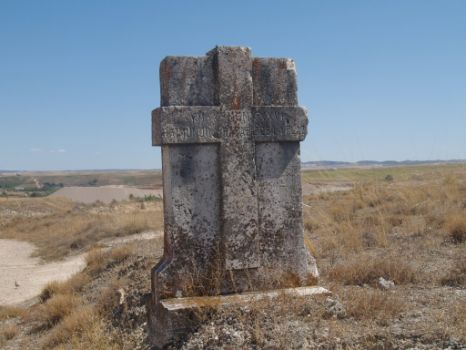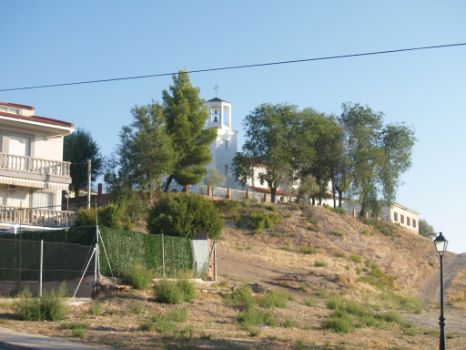Net of Natural
Trails

Stage 17: Estremera - Villamanrique de Tajo
Description
The first glimpse of the River Tagus through Madrid
Estremera is the first town in the Autonomous Community of Madrid that gets a glimpse of the River Tagus. From here, the route traverses landscapes with wide horizons, dotted with hills that channel the river.
The Trail leaves Estremera behind via a track on the southern edge of the town that leads to the M-241. The tracks in this Stage are all wide and easy to walk. On the way out of the town, Estremera's wastewater treatment plant (WWTP) can be seen on the left.
In the next stretch of this Stage, the Trail is interrupted twice by the M-241: first during 400 m, after which the route continues again during 300 m on the Trail, and the second time during 1.3 km long.
The route continues again along the Trail at the junction with the M-240. Please pay attention to the signs on the Trail and exercise caution when on the road. It is advisable to use a vehicle in this Stage for safety reasons.
There is a memorial stone cross at the access point to a number of crop fields. It should also be noted that, from the very beginning, this Stage ventures in and out of the "Vegas, Cuestas y Páramos del Sureste de Madrid" Site of Community Importance; hence, one must be especially mindful of the environment.

The Trail leaves the road momentarily near the village of Peñarrubia to access a wide track leading to several different routes, including "Ruta del Norte del Tajo y el Canal Channel" or "Camino del Cercado". These tracks allow travellers to avoid briefly the M-240 due to safety reasons; however, despite these interruptions, the Trail always heads back to the road.
The first interruption occurs just 80 m after reaching the road, and covers only 110 m. The route is interrupted again (for 250 m) after about 1 km. The Trail continues its normal course as soon as the route leaves the M-240, when it veers to the left through Colada de Valdecañas.

Back on the road, after the stretch through farmland, the route is interrupted again during 650 m. Fuentidueña is accessed via the Perchel district, crossing a footbridge over the A-3 motorway linking Madrid and Valencia.
Fuentidueña boasts picturesque monuments such as the Fuente Salobre or Fuente de la Dueña, the Church of San Andrés Apóstol, and the ruins of Fuentidueña Castle. The route leaves this beautiful Madrilenean town via a cattle track located on the upper edge that leads to Villamanrique de Tajo, the final destination.
The route continues for a few more kilometres through a landscape of rolling hills of cereal fields and a few olive groves. The comfortable walk is interrupted by an interStage with the M-326. This stretch of the road overlaps with the Trail during 1.2 km. The Trail continues along a track that first runs perpendicular to the right shoulder of the M-326, then continues parallel to the road until, 1.5 km further on, it reaches an interStage. From here, it continues towards another junction with the M-319.
The last part of the route runs mostly through farmland. Villamanrique de Tajo, which is very close, is accessed via a path that runs along the southeast face, wedged between the town and the river. The attention is first drawn to the steeple of the Church of Jesus el Nazareno that dominates the horizon. Once in town, the traveller may stock up on fresh water from different fountains, while the River Tagus, the partner in adventure, flows nearby.
Sites of interest
Profile

Highlights
Further information
Fuentidueña Castle
There is some indication that it could have been built in the twelfth century, and later expanded or rebuilt in the fourteenth century. Its history is tied to the "Reconquista" and kings Alphonse VI and Alphonse VIII. The former reconquered these lands from the Moors and married Zaida, a Muslim princess, while the latter granted the city charter and founded the market.
It was designated the seat of the kingdom under Doña Urraca, the wife of Alphonse I, the Warrior. During the War of Independence, in the nineteenth century, the castle suffered great devastation when many of its stones were used to erect other buildings.
This castle was home to several famous prisoners including Alvaro de Luna, Marquis of Villena.
Large and irregular in shape, it consisted of two building separated by an inner moat. Currently, only a wall and part of the two cylindrical towers on the sides remain standing. The outside of the keep, located on the opposite side of the city, can still be seen.
Fuente Salobre
Fuente Salobre, also known as Fuente de la Dueña (Fuentidueña), is located behind the church, at the foot of the castle. Its owner, Doña Urraca, controlled this fountain; although an inscription from 1883 states that it was built later. It consists of a stone basin with a single spout that collects water from a spring through a vault.







